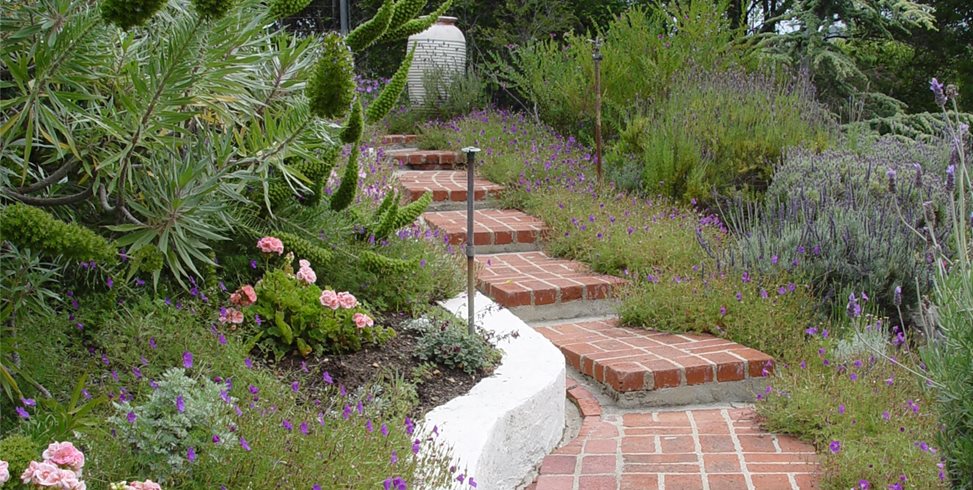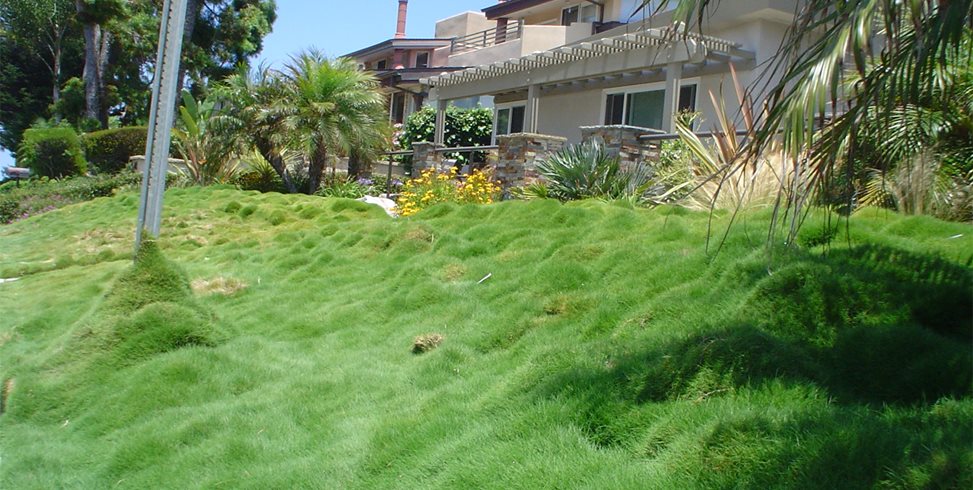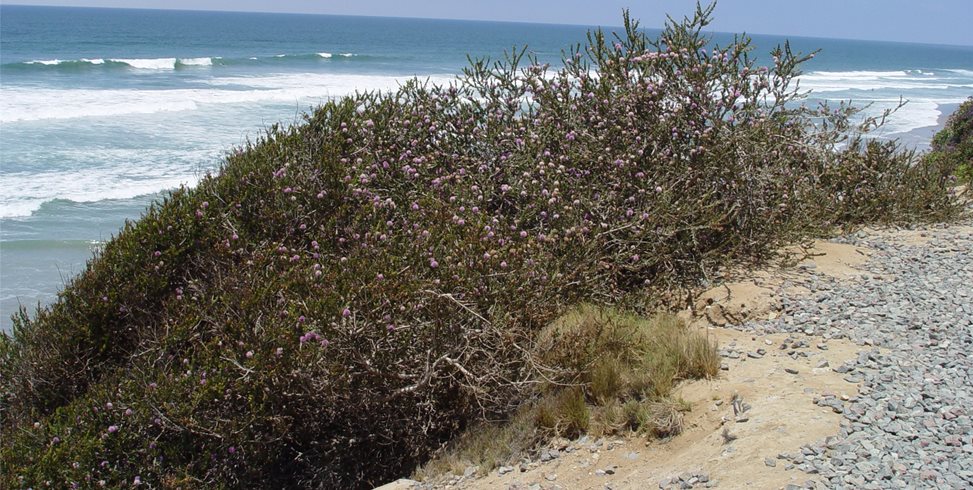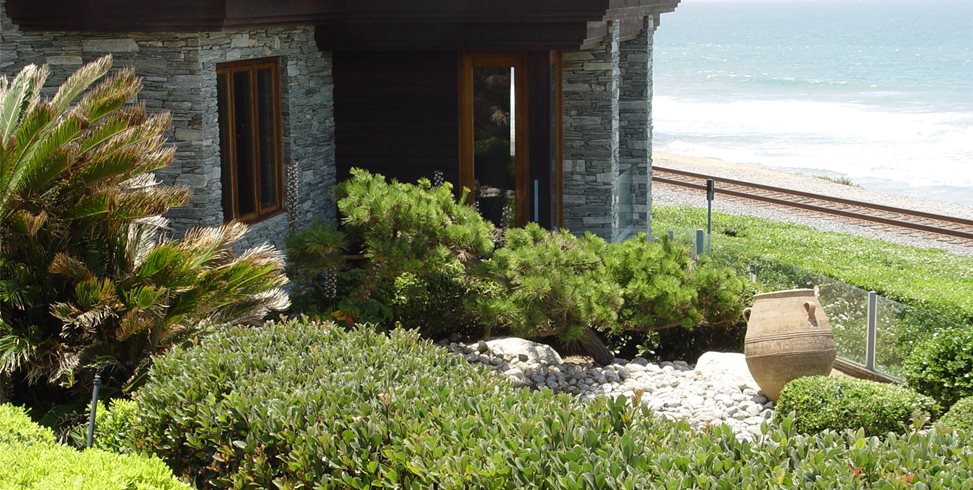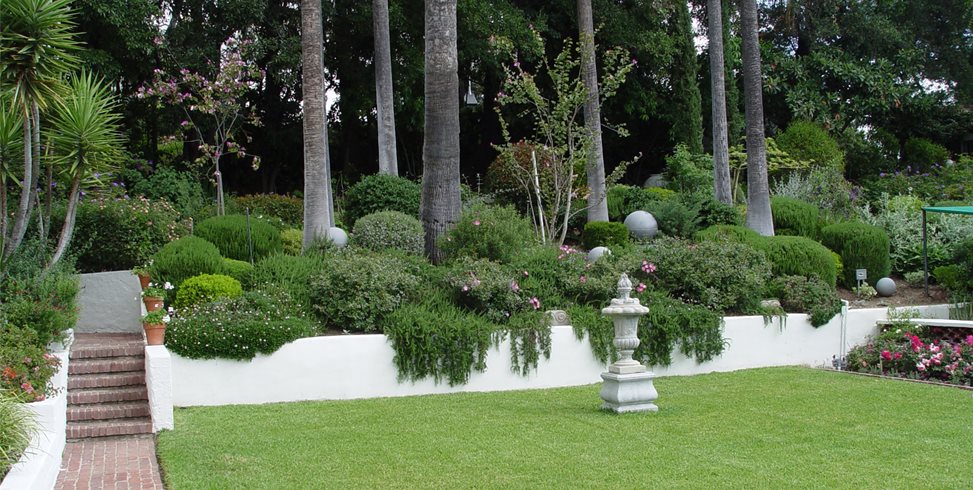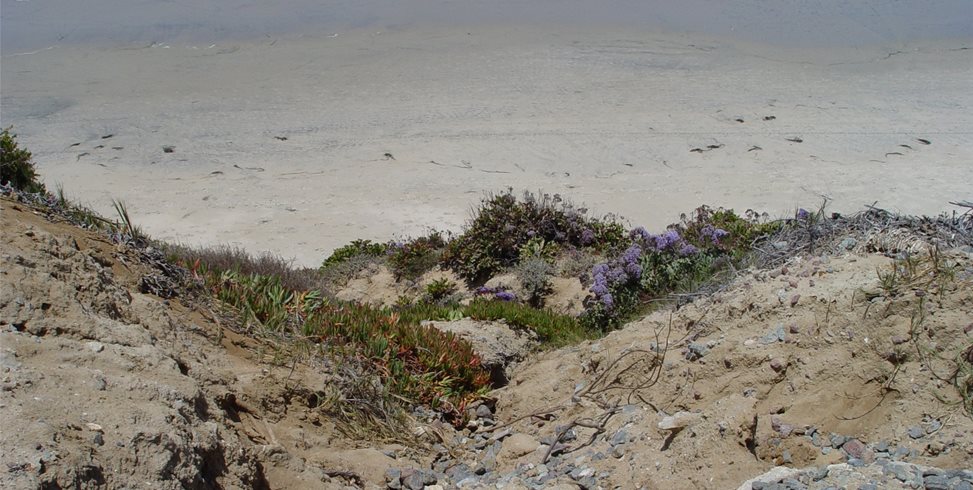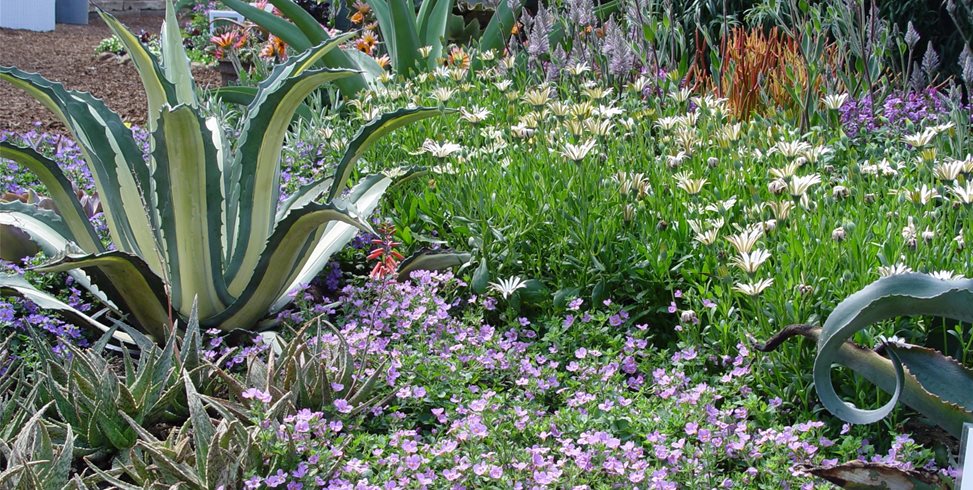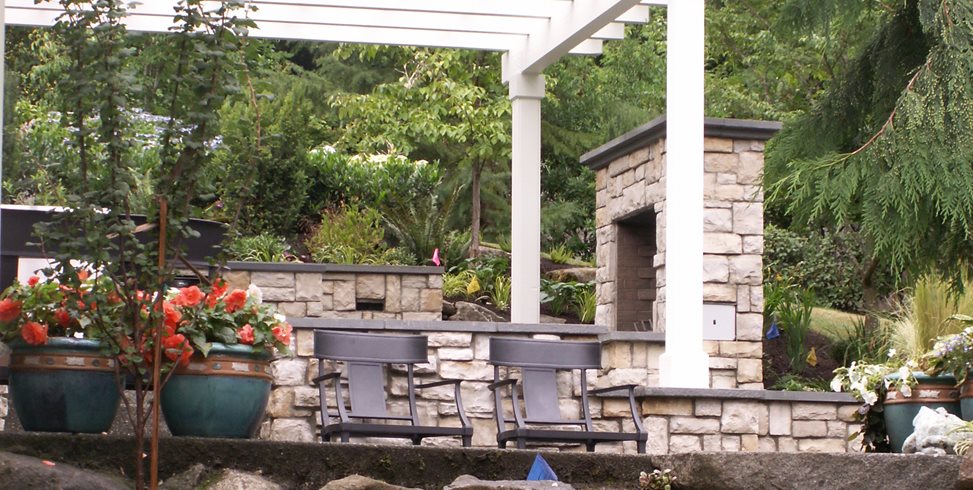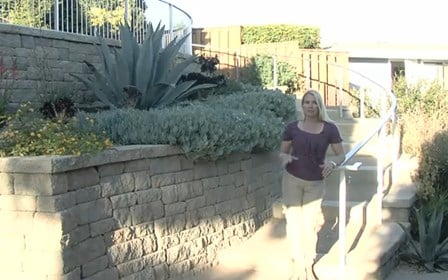Hillside Landscaping Ideas
Five tips for landscaping a slopeHillside landscaping is the most challenging of all residential design problems. Whether it is a natural undisturbed slope or one composed of cut-and-fill, there are five essentials that every homeowner should be aware of. Not all designers will be skilled in this special situation, so you must know your options before decisions are made that can not only be extraordinarily expensive to implement, they can have far reaching impact on the stability of your entire homesite.
More hillside homes have been lost to wildfires than those on level ground. This is because fire moves on land like water - only in reverse. When vegetation down slope from the home begins to burn, rising heat causes the house to catch fire prematurely. Therefore what you do to the slope down hill from your house or your neighbor's may dictate whether it survives a fire.
The Essentials
1. Preserve the view while solving problems.
The reason people buy hillside homes is for the view, which may be panoramic or quite narrow. The home's value is based on this, so all landscaping must be subordinate to the view. Before you begin any project that may impact this part of the site, define your view corridor, which is how you see the view from the interior rooms of the house. Also be aware of your neighbor's view because what you do can compromise it now or in the future.
Homes built within forested hillsides often clear trees to increase the view. The trees have vast roots that have held the soil in place for a long time, and when trees are cut down the roots die and the soil becomes vulnerable. For this reason it is far better to keep trees living whenever possible and use an arborist to assist you in cutting back or thinning the canopy to enhance your view without jeopardizing slope stability
Be aware of all new trees, shrubs and structures proposed between the house and top of slope. If too large these can interfere with the view. If carefully positioned they can frame smaller "windows" of view without compromising them.
Trees planted on the slope itself can over time exceed the height of the slope to encroach into the view. This is doubly important where a terrace may be graded into the slope further down where trees are planted for shade. Insist on trees with a low spreading canopy rather than an upright conical form such as a fir tree to avoid repeated topping in the future
How steep is too steep?
- A slope ratio of 2:1 drops one foot in every two horizontal feet. This is considered the most extreme that will support plants, and even then they often fail because water runs off before it can saturate the root zone.
- A slope ratio of 3:1 is more gentle and plants can be expected to grow well here if properly planted with species tolerant of drought. This is the maximum slope for mowed lawn.
- Slope ratios of lesser than 3:1 are more highly recommended because a wider range of plants can survive there due to increased water availability.
2. Take up slope as gradually as possible.
Any time you cut into a slope you compromise its integrity, therefore the less you do so the better. Cutting into a slope removes topsoil to expose subsoils, often heavy clays or shale that are poorly drained or lack microbial action of a living topsoil. This is why the planting on so many cut slopes and home pads on exposed subsoil are prone to failure.
To preserve the slope, take up the grade with a series of shorter terraces rather than one or two very large ones graded with cut and fill. The larger terraces may require extreme erosion control measures on the cut slope and a substantial retaining wall must be specially engineered to hold the fill. Such walls are constructed with enormous footings, sometimes extending down to bedrock. Such endeavors are growing more frequent due to the extensive hillside grading of subdivisions where mild slopes are built out. Homes on moderate to extreme slopes are prone to mudslides and slope failures in extreme weather.
Finding Suitable Plants for a Slope
Trees, shrubs and spreading plants for protecting slopes vary from state to state. The local USDA Natural Resource Conservation Service studies the best plants for government slope planting projects, and these are the most reliable choices for home landscapes. If you doubt whether your designer or contractor understands the ramifications of slope planting, contact the local office of this federal agency or your local state University Agricultural Extension office for a list of suitable species.
3. Use woody plants to bind slope deep underground.
Your slope is composed of soil layers like a cake. When the slope has been altered to create building pads, the natural binding of layers may be lost or compromised. When extreme weather such as heavy rains fall on these sites the water may travel through weaker seams to saturate layers deeper down. When they become wet enough they lose their cohesive qualities and slough off in layers. This is usually the cause of slope failures you see on the news during rainy seasons.
When planting a slope, be it natural, cut or fill, select trees with a deep network of fine roots. These are highly effective at binding subsoil layers. There has been a great deal of study on the use of fast growing drought resistant trees such as acacia, planted on slopes. They were topped every year or two to force growth energy into expanding the roots for more effective soil binding. Thought effective, the maintenance required by this technique precluded widespread use, but it is still recommended as a powerful tool for solving site specific problems.
-
Pro Tip: When growing plants on a hillside use drip irrigation with a slow application rate and create planting wells at the base of plants. The goal is to give the water enough time to penetrate to the roots instead of running wastefully down the hillside.
- Margie Grace, Grace Design Associates in Santa Barbara, CA.
4. Protect surface soils from rain spatter and runoff.
When rain falls on your slope, each drop that falls on bare earth dislodges particles of soil. As runoff runs down slope the velocity causes more particles to be scoured from the surface of the soil. This is the basic equation of erosion. Anything that slows the speed of runoff such as rocks or plants reduces scouring and protects the soil. Slopes are planted to cover soil and to slow the runoff velocity.
Freeway slope planting is the most widespread example of how a single monoculture of spreading plants such as iceplant or African daisy was used to protect the surface. Although it solved the problems of scouring and slowed velocity, there was nothing to prevent sloughing.
Landscape architects learned the hard way to combine spreading plants with deep rooted shrubs to provide underground slope stability. Each shrub rooted into the subsoil anchoring itself and the surrounding surface soils. Shrubs remain short so they don't interfere with views.
Fire Safety Tip
It is widely known that firefighters use a triage method to protect homes, and those considered indefensible due to heavily vegetated slopes or poor access to hillside home pads due to overgrown plants are often passed by. To ensure your home's safety is not compromised during a wildfire, be sure to provide adequate accessibility to maintain minimal fuel loads and allow firefighters to save your house.
5. Plan for maintenance and accessibility.
Very old cut and fill hillside subdivisions built decades ago featured extensive erosion control planting between house pads. Over time the planting grew so dense that these areas became impenetrable, often becoming thicket habitats for undesirable wildlife. When wildfires struck such neighborhoods, the flames traveled through the subdivision along these fuel rich slope corridors. Today high fire hazard regions require all planted slopes to be accessible to maintenance crews for vegetation management.
When planning any kind of landscaping on a slope, it's vital to allow for maintenance access. Provide an open through-way to drag cut material out of the area and into trucks. These accessibility paths need not be paved, just fairly level and open. Plan for both vertical and horizontal access across the slope. The ability to manage slope planting ten to twenty years down the road is directly dependent on how well you accommodate these needs today.

 Backyards
Backyards
 Front Yards
Front Yards
